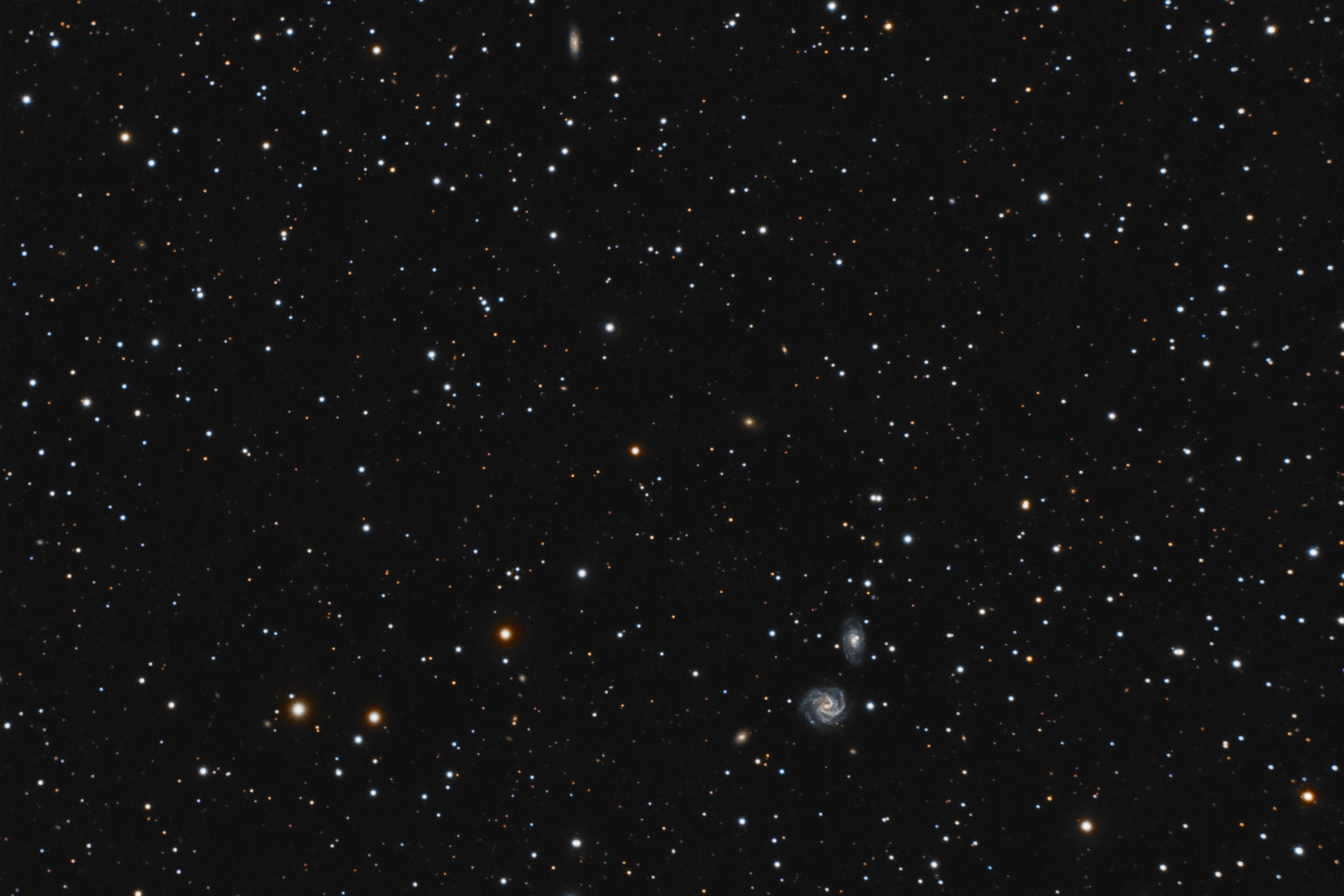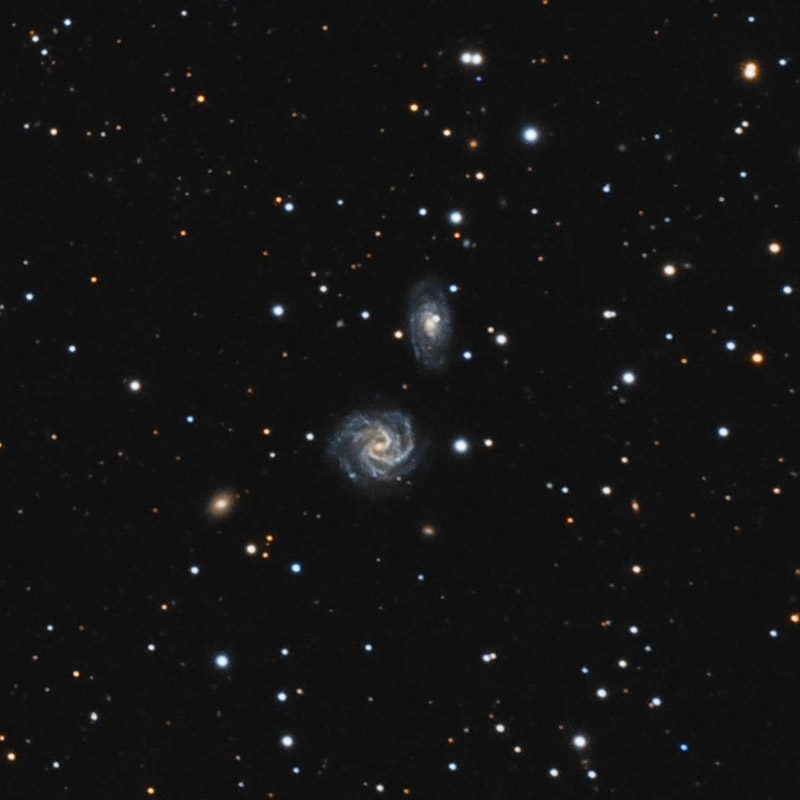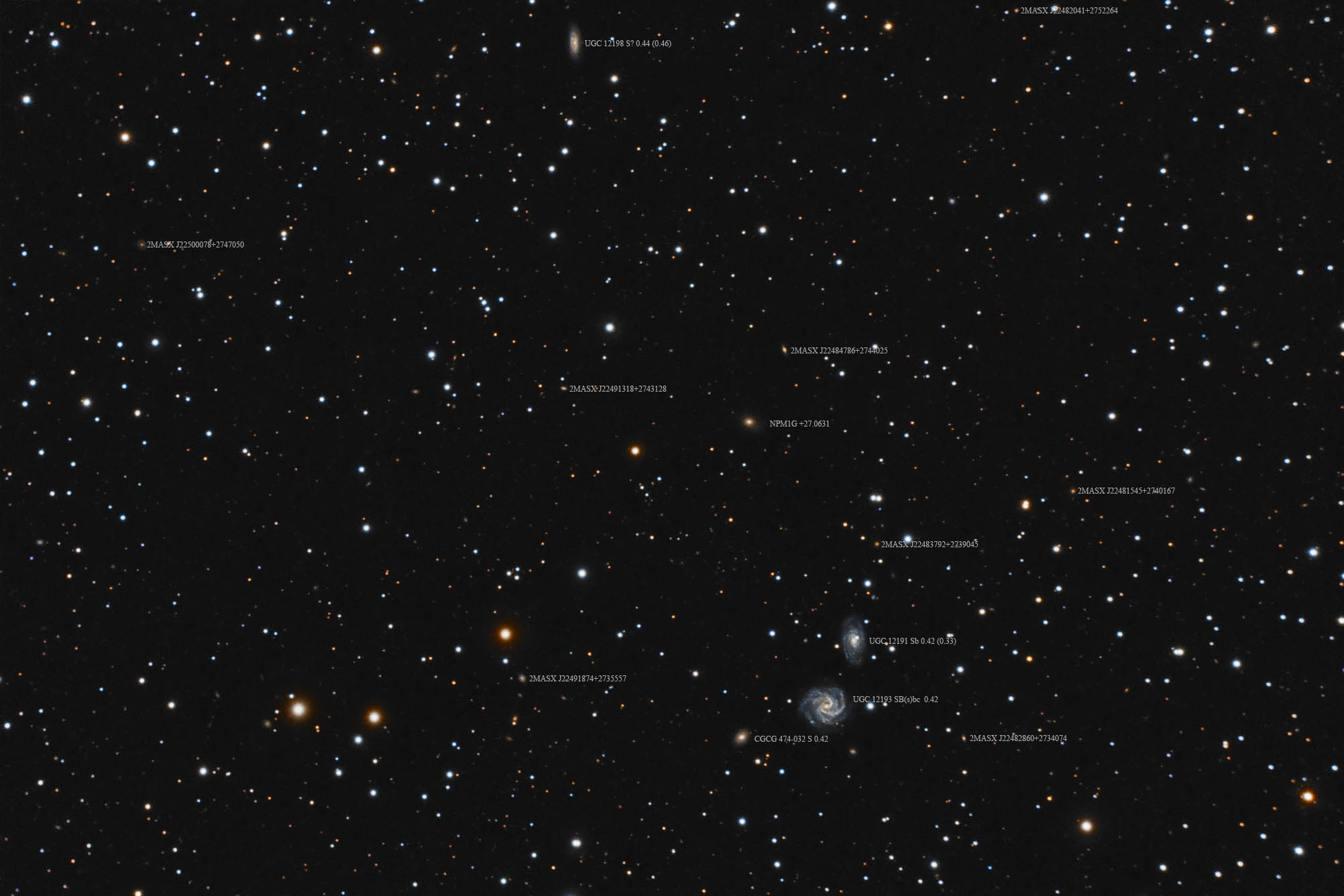Object name: UGC12193Designation(s): UGC12193, UGC12191, UGC12198, The WBL 687 galaxy group is a small group of 3 galaxies in Pegasus just west of the northeastern star of the Great Square, Beta Pegasi. Redshift puts the group about 420 million light-years distant. The group consists of UGC 12191, UGC 12193 and CGCG 474-032. Redshift also shows UGC 12198 to be of about the same redshift. Out of my frame to the north, UGC 12194 is a similar galaxy with a very slightly greater redshift that puts it 430 million light-years distant. These 5 likely constitute the PPS2 007 group. Though it is centered just above NPM1G +27.0631 which has no redshift but appears to be more distant so likely this is just coincidence. Still, I'd like to know more about this galaxy as it appears to have a plume to the southwest yet no interacting companion is to be found. Is it the result of a merger?
UGC 12191 is an SB spiral at 420 million light-years by redshift but about 100 million light-years closer by other measurements. Since the other galaxies all have the same redshift as it has I'm going to go with the redshift distances here though this results in a very large galaxy. It is a nearly face-on Sb spiral that's some 165,000 light-years across if the 420 million light-year distance is correct. Going with the nearer distance makes it a130,000 light-years in diameter, still very large as spiral go.
UGC 12193 is listed at NED as an SB(s)bc spiral and is seen fully face on. It is slightly larger in angular size though looks much larger since it is seen almost fully face on. Its size works out to be 175,000 light-years in diameter. There were no non-redshift distance estimates for it.
The third, much smaller, member is CGCG 474-032. It is a rather normal sized spiral at 65,000 light-years in diameter. It appears to be an old, dying spiral by its mostly red color. It stands in rather stark contrast to the vibrant star formation in the larger spirals evidenced by their strong blue color.
The two UGC galaxies are separated by only 110 seconds of arc. If they are at the same distance that would mean they could be as close as a quarter of a million light-years. I'd expect some tidal distortion though if this is their first time close that might not show as yet. Still, I think it likely there's more separation than this between them. Of course, they might be unrelated though I find this unlikely.
The probable 4th member of the group UGC 12198 is seen rather edge on, still, it is rather large at 110,000 light-years across. It too seems to still have active star formation, unlike CGCG 474-032.
There's not a lot on this field at NED. As such, I broke my usual rule and annotated all galaxies at NED in the field, not just those with redshift distance. I didn't include those that are listed as UvS sources as most are stars and separating the two nearly impossible with more than 400 listed in this image to sort through.
14" LX200R at f/10, L=4x10' RGB=2x10', STL-11000XM, Paramount ME Related Designation(s):2MASS J22484389+2735019, 2MASS J22484414+2735011, 2MASS J22491092+2751550, 2MASX J22484078+2736395, 2MASX J22484417+2735015, 2MASX J22491092+2751548, 2MASXi J2248407+273639, 2MASXi J2248441+273500, 2MASXi J2249109+275155, ALFALFA 2-327, ALFALFA 2-329, CGCG 2246.3+2721, CGCG 2246.4+2719, CGCG 2246.8+2736, CGCG 474-030, CGCG 474-031, CGCG 495-032, GALEXASC J224844.09+273501.1 , GALEXASC J224910.95+275155.1 , IRAS F22463+2719, KIG 0988:[VOV2007] 000, KPG 573A, KPG 573B, KTG 76A, KTG 76B, KUG 2246+273, MCG +04-53-015, MCG +04-53-016, NPM1G +27.0630, NSA 150174, NSA 170018, NSA 170020, NVSS J224843+273501, PGC 069765, PGC 069768, PGC 069787, SDSS J224840.81+273640.0, UGC 12191, UGC 12193, UGC 12198, UGC12191, UGC12193, UGC12198, UZC J224840.7+273639, UZC J224844.1+273500, WBL 687-001, WBL 687-002, | | 

